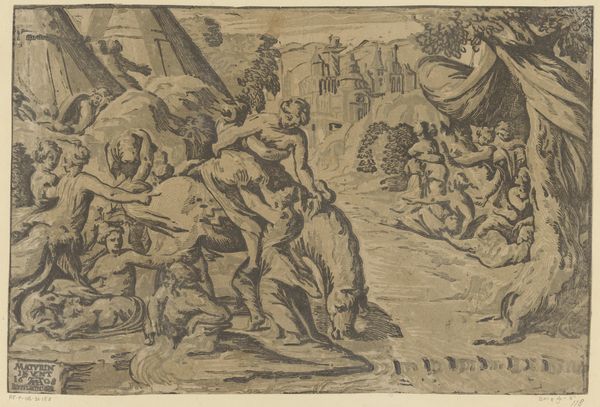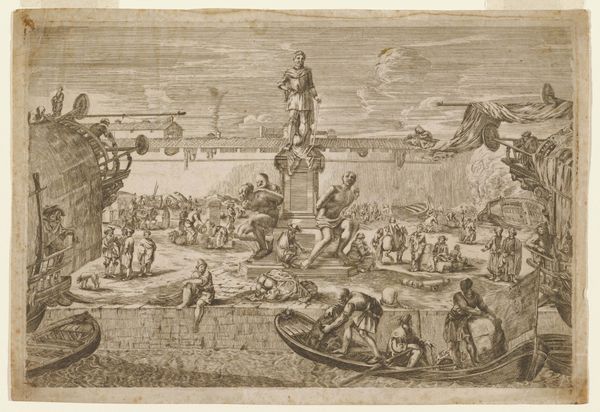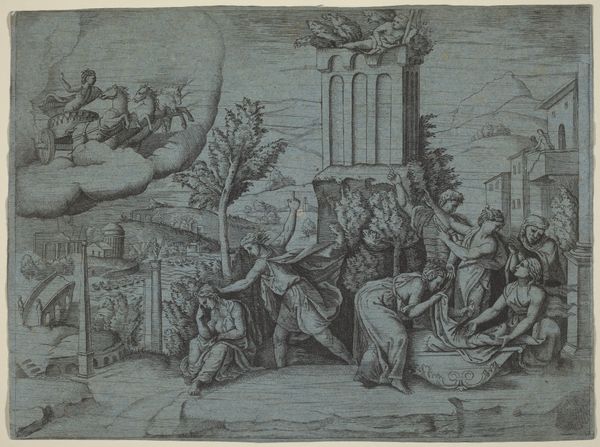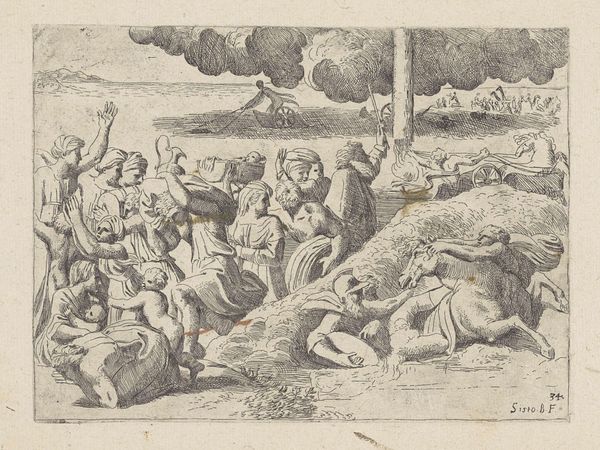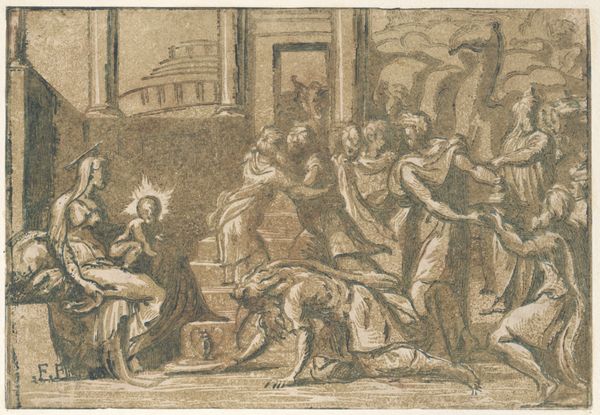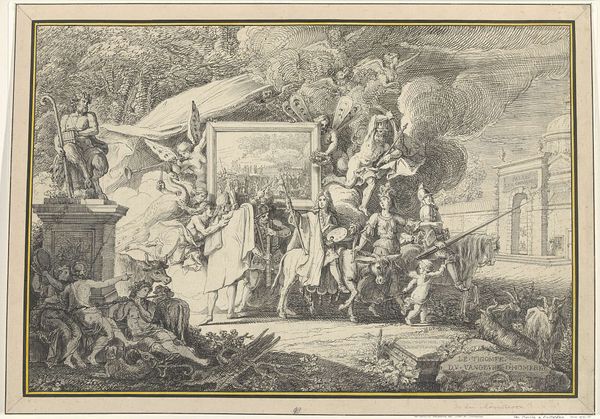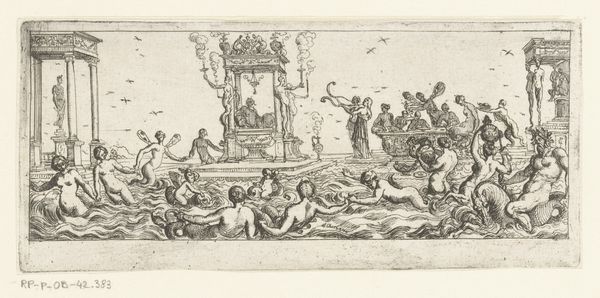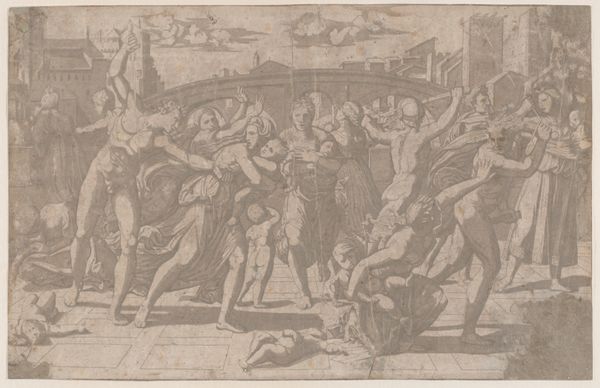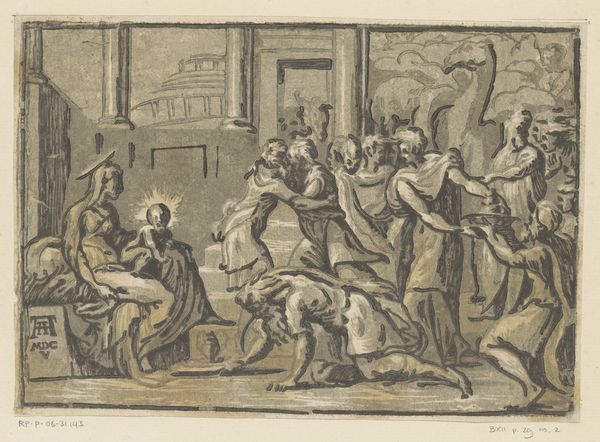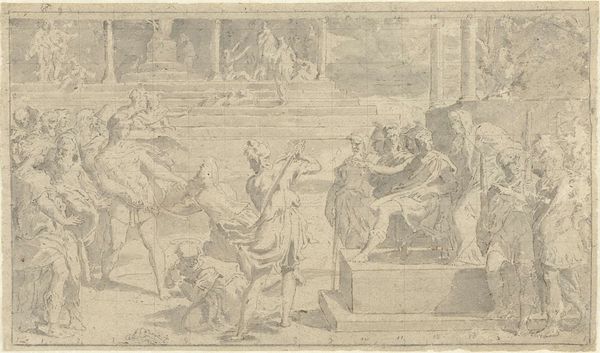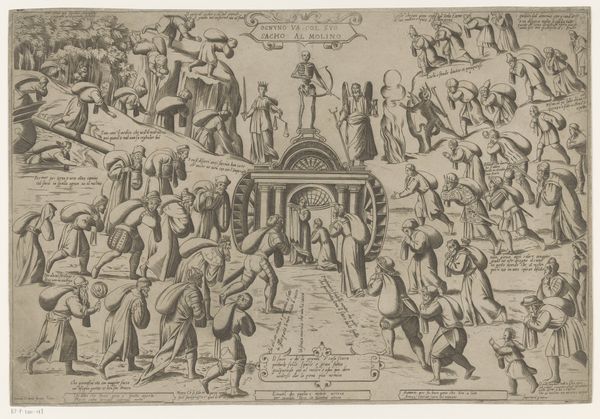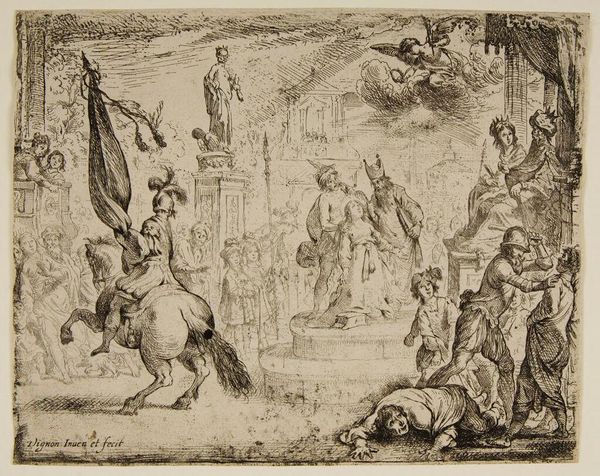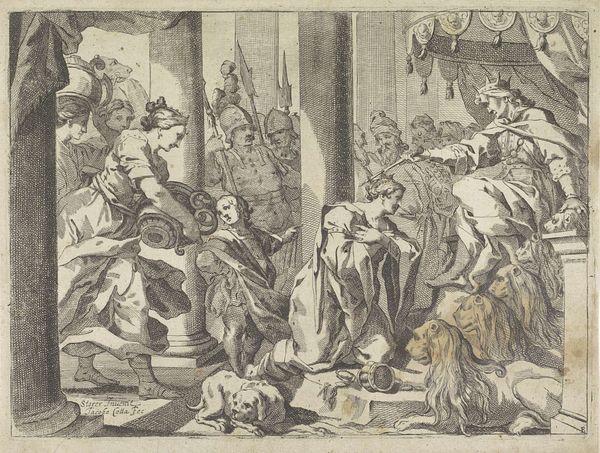
drawing, ink
#
drawing
#
baroque
#
landscape
#
figuration
#
ink
#
history-painting
Copyright: Public Domain
Editor: Here we have Nicolas Poussin's drawing "Adoration of the Golden Calf" in ink. The monochrome palette gives it a somber mood, but the composition itself feels dynamic, doesn't it? What strikes you most about the piece? Curator: Indeed. Immediately, one notices the formal structuring of space. The architectural altar on the left mirror the form supporting the idol, creating visual equilibrium, yes? Consider how that placement anchors a flowing spectacle of figures around these key geometric volumes. How does the contrast between vertical forms and dynamic groupings of individuals create structural rhythm? Editor: It does feel very structured when you point it out, but the swirling figures make it feel chaotic at the same time. How do you read the landscape in the background? It almost feels secondary to the figures. Curator: Precisely. Observe that its treatment shifts tonally, defining depth, yet its primary function remains structural. See how it frames and encloses the devotional performance with horizontal layering? The figure in the clouds suggests the presence of divinity and divine law overlooking events on the ground, an interesting layering technique, wouldn't you agree? Poussin’s method of semiotic encoding here speaks through structural elements, carefully arranged to articulate moral message. Editor: So, it's less about representing a literal scene, and more about using forms to convey meaning. That's very different from how I initially saw it. Thanks for the insight. Curator: An art object is inherently communicative. Learning to decipher visual vocabularies empowers richer dialogues with works of this caliber.
Comments
No comments
Be the first to comment and join the conversation on the ultimate creative platform.
